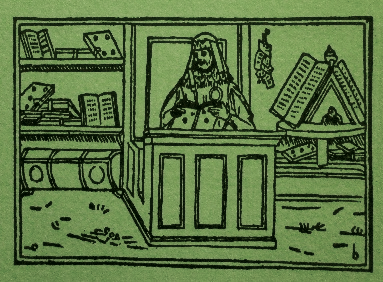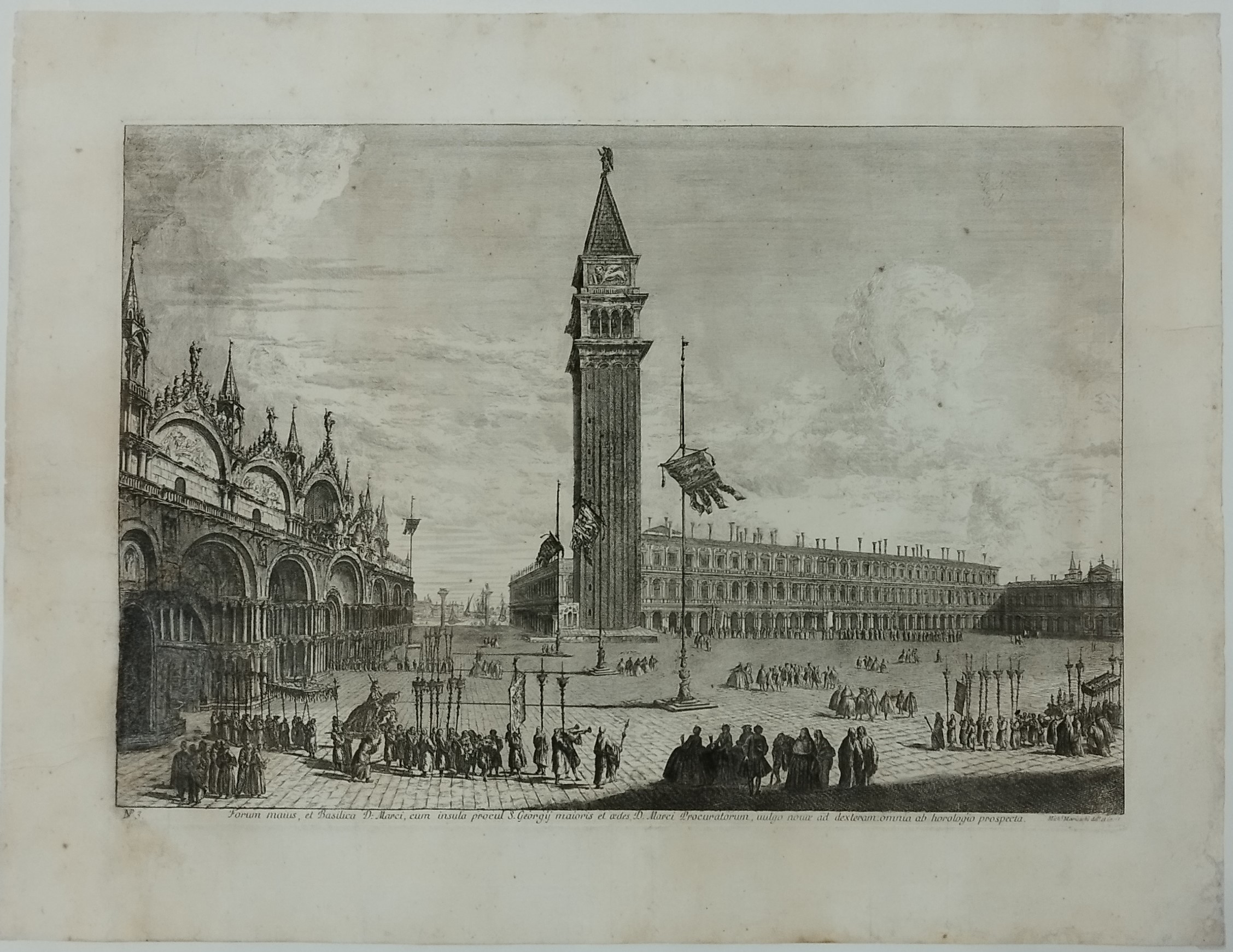Acquaforte di mm 315 x 463. Foglio 59 x 43 cm. Vergata grossa. Filigrana a “tre mezzelune” e contromarca “lettere GF entro stemma”. II/IV. ” Forum maius et Basilica D. Marci, cum insula procul S. Georgij maioris et aedes D: Marci Procuratorum, vulgo novae ad dexteram : omnia ab Horologio prospecta”A destra, sotto il titolo, sul margine inferiore, “Mich. Marieschi del.t et inci.t”. A sinistra a fianco del titolo N.°3. Provenienza: “Magnificentiores selectioresque urbis Venetiarum prospectus, quos olim Michael Marieschi venetus pictor, et architectus in plerisque tabulis depinxit”.. “Vendutur in vico Sancti Lucae apud eundem Auctorem Venetijs” 1741 (ma 1742). Succi “La Serenissima nello specchio di rame”: “L’incisione, databile al 1739-40, corrisponde, con alcune varianti, ad un dipinto che fu esposto nel 1966 alla Galleria Lorenzelli di Bergamo. Altre versioni: National Gallery, Dublino.” Questa straordinaria incisione offre, oltre alla magnificenza delle architetture, una pittoresca raffigurazione della Processione dalla Basilica. Succi n 16, 1987. Michele Marieschi (1710 – 1743) figlio di un mediocre pittore, studiò con passione architettura e si staccò presto dal padre. Tornato in patria dalla Germania nel 1735, dipinse belle vedute di Venezia. Nel 1741 (o 1742) diede alle stampe la raccolta di 21 acquaforti tratte dalle sue tele. Le incisioni di Marieschi rendono meglio delle sue pitture quel mondo scenografico e teatrale che la Venezia quotidiana offriva all’occhio dell’osservatore. Succi 1987, 21 I/IV, Montecuccoli degli Erri, Pedrocco 1999, 20 I/IV, Mary Pittaluga 1952, pag.35 e seg. (EN) Etching 315 x 463 mm. Sheet 59 x 43 cm. Coarse rod. “Three moons” watermark and “letters GF within coat of arms” countermark. II / IV. “Forum maius et Basilica D. Marci, cum insula procul S. Georgij maioris et aedes D: Marci Procuratorum, vulgo novae ad dexteram: omnia ab Horologio prospecta” On the right, under the title, on the lower margin, “Mich. Marieschi del. t et inci.t “. On the left next to the title No. 3. Provenance: “Magnificentiores selectioresque urbis Venetiarum prospectus, quos olim Michael Marieschi venetus pictor, et architectus in plerisque tabulis depinxit” .. “Vendutur in vico Sancti Lucae apud eundem Auctorem Venetijs” 1741 (but 1742). Succi “The Serenissima in the copper mirror”: “The engraving, datable to 1739-40, corresponds, with some variations, to a painting that was exhibited in 1966 at the Galleria Lorenzelli in Bergamo. Other versions: National Gallery, Dublin.” This extraordinary engraving offers, in addition to the magnificence of the architecture, a picturesque depiction of the Procession from the Basilica. Succi n 16, 1987. Michele Marieschi (1710 – 1743) son of a mediocre painter, he studied architecture with passion and soon broke away from his father. Returning to his homeland from Germany in 1735, he painted beautiful views of Venice. In 1741 (or 1742) he published the collection of 21 etchings taken from his canvases. Marieschi’s engravings make the scenographic and theatrical world that daily Venice offered to the observer’s eye better than his paintings. Succi 1987, 21 I / IV, Montecuccoli degli Erri, Pedrocco 1999, 20 I / IV, Mary Pittaluga 1952, page 35 et seq.
Libreria Emiliana
Antiquaria
Libri e Stampe Veneziane
dal XV al XXI Secolo
dal XV al XXI Secolo


